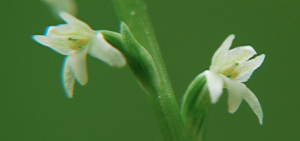
News/Reports
Browne Lake Ecological Reserve Overview : Biological and Physical
ORIGINAL PURPOSE
To preserve a wet meadow ecosystem and surrounding forest in the Interior Cedar Hemlock zone.
Physical: The reserve lies on a hilly area of the Interior Plateau, east of Okanagan Lake, perched above the south lip of Mission Creek Valley. It contains a prominent hill in its eastern half and a wet meadow, which drains into Hydraulic Creek, in its rolling to flat western half. Slope exposure is largely to the west.
Biological: Except for a wet meadow of four to five hectares in size, the entire reserve is forested, mostly with dense stands of lodgepole pine originating after a fire 80 to 100 years ago. A few veteran Douglas-firs and western larch are scattered through the area, and Douglas-fir regeneration is co-dominant with lodgepole pine in the eastern part of the reserve. A stand of spruce, subalpine fir and larch is adjacent to the southeast corner of the meadow.
The meadow vegetation is dominated by water sedge, but the wettest locations contain slender sedge as well, and the bog rein-orchid is common. A peripheral zone is characterized by bluejoint and other grasses. Some weedy species occur as a result of former cattle grazing and hay cutting.
The reserve contains a diversity of wildflowers among which lilies (trillium, glacier lily, chocolate lily, tiger lily, queen’s cup, fairybells, Solomon’s-seal, clasping twisted stalk) and orchids (mountain lady’s-slipper, fairy-slipper, coralroot, rattlesnake-plantain, rein-orchid) are well represented. The mountain lady’s slipper is considered rare in British Columbia. Interesting spring flowers, including alpine Lewisia and shooting star, occur on shallow soils and in mossy sites associated with rock outcrops and seepage near the upper boundary of the reserve.
Deer, Moose, Beaver, Red Squirrels, Flying Squirrels, Porcupines and Coyotes have been noted. Ducks occur on a beaver pond at the southwest corner of the meadow, especially during the nesting season.
Cultural: The subalpine meadow was used by First Nations for hunting.
THREATS:
Climate change:
Increased levels of disturbance such as beetle infestations and wildfires have been projected to occur as the climate changes. In this reserve, the infestation of mountain pine beetles may continue, resulting in a change in forest habitat. The wet meadow that is surrounded by the forest may be subject to moisture depletion as the temperatures warm and hydrology is altered.
Forest health:
Increased logging adjacent to the reserve (due to threat of mountain pine beetle kill) creates roads and increases access to the reserve.
Recreation: Campers in the recreation area adjacent to the reserve pose a threat of fire and pollution.
Campers in the recreation area adjacent to the reserve pose a threat of fire and pollution.
Flora:
bluejoint, reedgrass (Calamagrostis canadensis)
coralroot (Corallorhiza sp.)
Douglas-fir (Pseudotsuga menziesii)
fairybells (Prosartes sp.)
fir, subalpine (Abies lasiocarpa var. lasiocarpa)
lady’s-slipper, mountain (Cypripedium montanum)
larch, western (Larix occidentalis)
lewisia, alpine (Lewisia pygmaea var. pygmaea)
lily, chocolate (Fritillaria affinis)
lily, glacier (Erythronium grandiflorum)
lily, tiger (Lilium columbianum)
orchid, fairy slipper (Calypso bulbosa)
pine, lodgepole (Pinus contorta var. latifolia)
queen’s cup (Clintonia uniflora)
rattlesnake-plantain (Goodyera oblongifolia)
sedge, slender (Carex lasiocarpa ssp. americana)
sedge, water (Carex aquatilis)
shootingstar, pretty (Dodecatheon pulchellum)
Solomon’s seal (Maianthemum sp.)
trillium, western (Trillium ovatum var. ovatum)
twistedstalk, clasping (Streptopus amplexifolius)
Fauna:
Beaver, American (Castor canadensis) Coyote (Canis latrans)
Deer (Odocoileus sp.)
Moose (Alces americanus)
Porcupine, North American (Erethizon dorsatum)
Squirrel, Northern Flying (Glaucomys sabrinus)
Squirrel, Red (Tamiasciurus hudsonicus)

